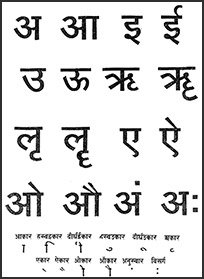Padamanjari, Padamañjarī, Padamamjari: 6 definitions
Introduction:
Padamanjari means something in Hinduism, Sanskrit. If you want to know the exact meaning, history, etymology or English translation of this term then check out the descriptions on this page. Add your comment or reference to a book if you want to contribute to this summary article.
In Hinduism
Vyakarana (Sanskrit grammar)
Source: Wikisource: A dictionary of Sanskrit grammarPadamañjarī (पदमञ्जरी).—The learned commentary by Haradatta on the काशिकावृत्ति (kāśikāvṛtti). Haradatta was a very learned grammarian of the Southern School, and the Benares School of Grammarians follow पदमञ्जरी (padamañjarī) more than the equally learned another commentary काशिकाविवरणपञ्जिका (kāśikāvivaraṇapañjikā) or न्यास (nyāsa). In the Padamanjarī Haradatta is said to have given everything of importance from the Mahābhāșya; cf. अधीते हि महाभाष्ये व्यर्था सा पदमञ्जरी (adhīte hi mahābhāṣye vyarthā sā padamañjarī). For details see Mahābhāșya D. E. S. Ed. Vol. VII P. 390-391.

Vyakarana (व्याकरण, vyākaraṇa) refers to Sanskrit grammar and represents one of the six additional sciences (vedanga) to be studied along with the Vedas. Vyakarana concerns itself with the rules of Sanskrit grammar and linguistic analysis in order to establish the correct context of words and sentences.
Languages of India and abroad
Sanskrit dictionary
Source: Cologne Digital Sanskrit Dictionaries: Aufrecht Catalogus Catalogorum1) Padamañjarī (पदमञ्जरी) as mentioned in Aufrecht’s Catalogus Catalogorum:—lex. by Kavivallabha. Burnell. 52^b.
—by Bhallaṭa Kavi. Oppert. 5567.
2) Padamañjarī (पदमञ्जरी):—Amarakośaṭīkā by Lokanātha. Io. 569.
3) Padamañjarī (पदमञ्जरी):—a
—[commentary] on the Kāśikāvṛtti (q. v.), by Haradatta.
4) Padamañjarī (पदमञ्जरी):—a poem in praise of Kṛṣṇa, by Kṛṣṇaśarman. L. 1014.
5) Padamañjarī (पदमञ्जरी):—[nyāya] by Bhaṭṭācārya. B. 4, 26. Compare Nyāyasiddhāntamañjarī.
—by Ananta Bhaṭṭa. Khn. 64.
6) Pādamañjarī (पादमञ्जरी):—‘a treatise on Ṛgveda’. Np. Vi, 4.
Source: Cologne Digital Sanskrit Dictionaries: Monier-Williams Sanskrit-English Dictionary1) Padamañjarī (पदमञ्जरी):—[=pada-mañjarī] [from pada > pad] f. Name of various works.
2) Pādamañjarī (पादमञ्जरी):—[=pāda-mañjarī] [from pāda > pād] f. Name of a treatise on [Ṛg-veda]
[Sanskrit to German]
Sanskrit, also spelled संस्कृतम् (saṃskṛtam), is an ancient language of India commonly seen as the grandmother of the Indo-European language family (even English!). Closely allied with Prakrit and Pali, Sanskrit is more exhaustive in both grammar and terms and has the most extensive collection of literature in the world, greatly surpassing its sister-languages Greek and Latin.
Kannada-English dictionary
Source: Alar: Kannada-English corpusPadamaṃjari (ಪದಮಂಜರಿ):—[noun] (mus.) a musical mode.
Kannada is a Dravidian language (as opposed to the Indo-European language family) mainly spoken in the southwestern region of India.
See also (Relevant definitions)
Partial matches: Pada, Manjari, Mancari, Pata.
Ends with: Girvanapadamanjari, Paryayapadamanjari, Prayuktapadamanjari, Samnyasapadamanjari, Shabdapadamanjari, Suprasiddhapadamanjari, Vaiyakaranapadamanjari.
Full-text (+18): Vaiyakaranapadamanjari, Shabdapadamanjari, Paryayapadamanjari, Samnyasapadamanjari, Haradatta, Suprasiddhapadamanjari, Ranganatha, Agrihita, Lokanatha sharman, Makaranda, Acikitsya, Rudrakumara, Avyapti, Shivabhatta, Bhagavritti, Kuni, Kavivallabha, Kurvadrupa, Shiva bhatta, Kraiyadika.
Relevant text
Search found 7 books and stories containing Padamanjari, Padamañjarī, Padamamjari, Pada-manjari, Pada-mañjarī, Pādamañjarī, Pāda-mañjarī, Padamaṃjari, Padamañjari; (plurals include: Padamanjaris, Padamañjarīs, Padamamjaris, manjaris, mañjarīs, Pādamañjarīs, Padamaṃjaris, Padamañjaris). You can also click to the full overview containing English textual excerpts. Below are direct links for the most relevant articles:
Naishadha-charita of Shriharsha (by Krishna Kanta Handiqui)
Introduction to Nārāyaṇa’s commentary < [Introduction]
Introduction to Cāṇḍūpaṇḍita’s commentary < [Introduction]
Amarakoshodghatana of Kshirasvamin (study) (by A. Yamuna Devi)
Philosophy (6): Advaita < [Chapter 4 - Cultural Aspects]
Commentaries on Amarakośa < [Chapter 1 - Kośa Literature–A Brief Survey]
Vakyapadiya (study of the concept of Sentence) (by Sarath P. Nath)
3.3. Sentence According to the School of Vyākaraṇa < [Chapter 2 - Perspectives on the Concept of Sentence]
A History of Indian Philosophy Volume 2 (by Surendranath Dasgupta)
Part 4 - Practice of Medicine in the Atharva-veda < [Chapter XIII - Speculations in the Medical Schools]
A History of Indian Philosophy Volume 5 (by Surendranath Dasgupta)
Part 1 - The Literature and History of Southern Śaivism < [Chapter XXXIV - Literature of Southern Śaivism]
Reverberations of Dharmakirti’s Philosophy (by Birgit Kellner)